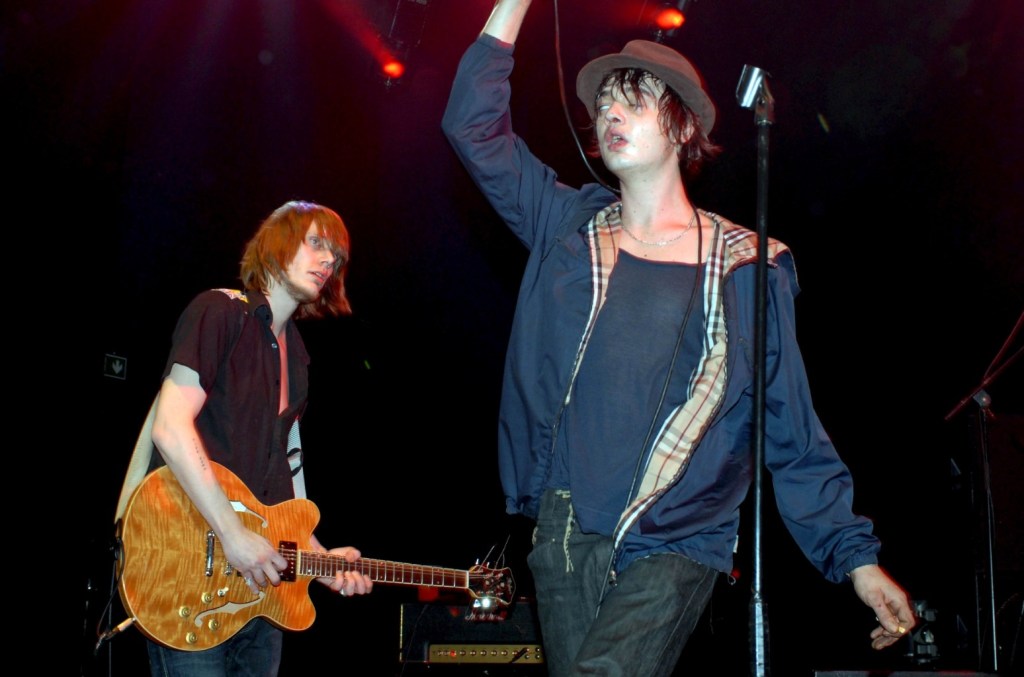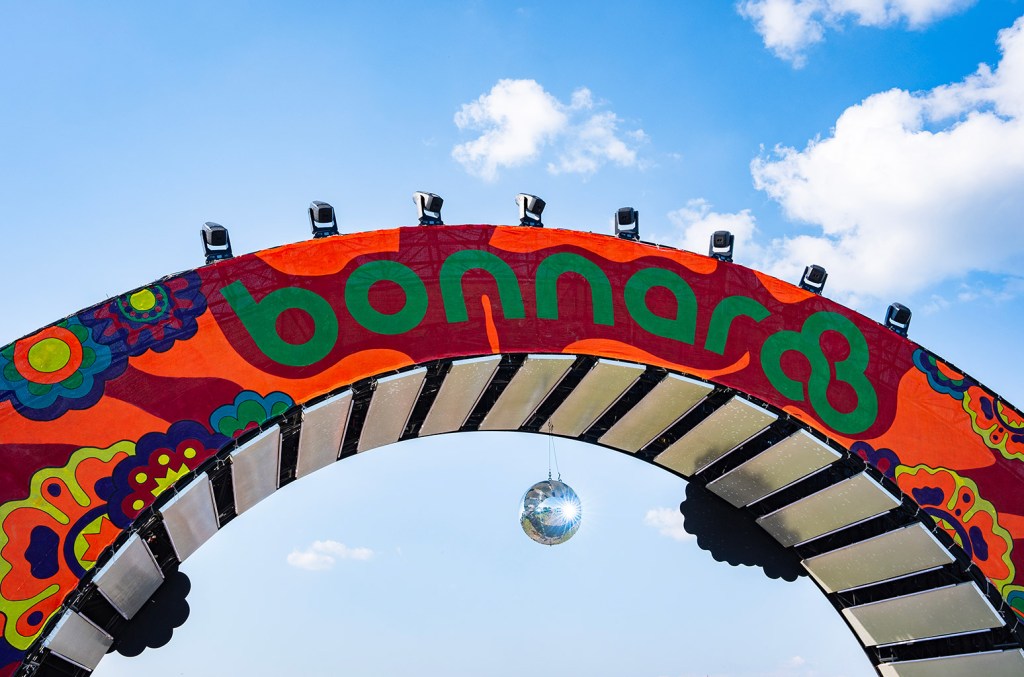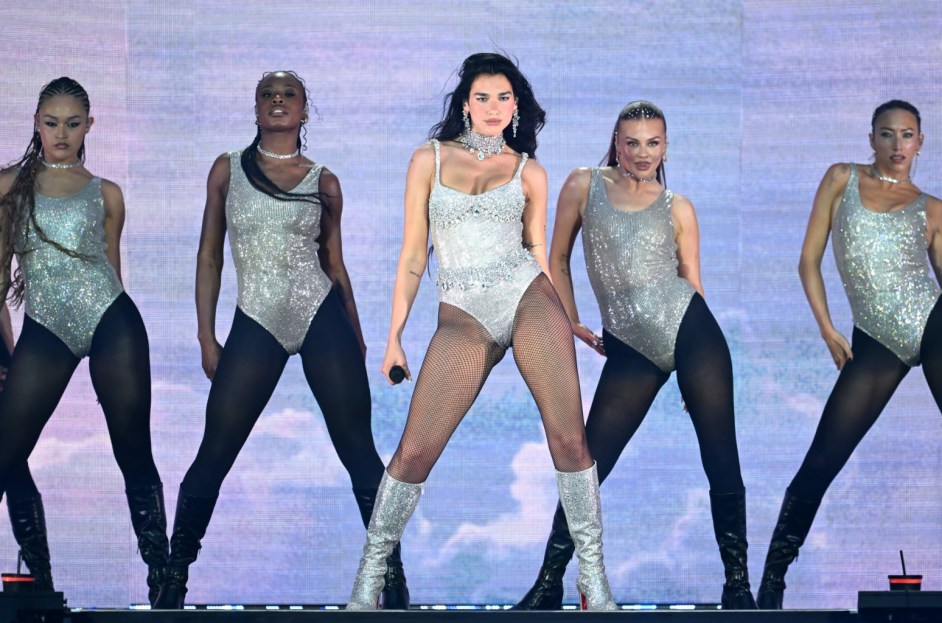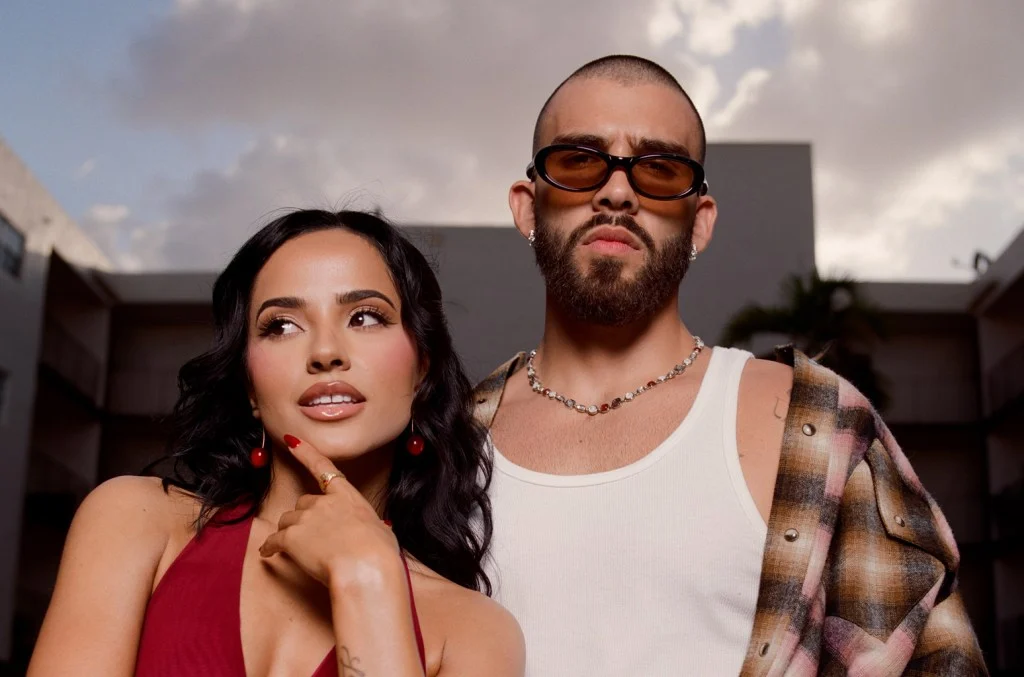Music
Page: 132
Suga, rapper and songwriter in the global K-pop sensation BTS, is discharged from South Korea’s mandatory military service as of Saturday (June 21), marking the official return of all seven members from their enlistment duties.The group’s representatives, BIG Hit, confirmed on Wednesday that Suga was nearing completion of his service duties after using up his remaining leave. His official discharge date is Saturday.
BIG Hit had said earlier that no events were planned for Suga’s release out of concern for overcrowding.It is a momentous occasion for fans of BTS, known as BTS ARMY. The seven singers of the superstar K-pop band plan to reunite as a group sometime in 2025 now that they’ve finished their service.Last week, BTS members RM and V were discharged from South Korea’s military after fulfilling their mandatory service. Jimin and Jung Kook were discharged a day later. All four were enlisted in December 2023.Jin, the oldest BTS member, was discharged in June 2024. J-Hope was discharged in October.Six of the group’s seven members served in the army, while Suga fulfilled his duty as a social service agent, an alternative form of military service, due to a prior shoulder injury.In South Korea, all able-bodied men aged 18 to 28 are required by law to perform 18-21 months of military service under a conscription system meant to deter aggression from rival North Korea.The law gives special exemptions to athletes, classical and traditional musicians, and ballet and other dancers if they have obtained top prizes in certain competitions and are assessed to have enhanced national prestige. K-pop stars and other entertainers aren’t subject to such privileges.However, in 2020, BTS postponed their service until age 30 after South Korea’s National Assembly revised its Military Service Act, allowing K-pop stars to delay their enlistment until 30.There was heated public debate in 2022 over whether to offer special exemptions of mandatory military service for BTS’ members, until the group’s management agency announced in October 2022 that all seven members would fulfill their duties.On Saturday, Suga wrote to BTS ARMY directly in a letter addressed to fans posted on Weverse, HYBE’s social media/fandom platform.Noting that he’s missed his fans and that he’s been thinking about how he’d reconnect with them, Suga reflected on BTS’ two-year hiatus. “I think I had two years to think about myself,” he wrote, in part, saying he’d “been running forward, but this time has been an opportunity to look back on myself.”
Trending on Billboard
“Dear ARMY, thank you for your patience and thank you very much. And I’m sorry for making you disappointed and worried about what happened last year. Above all, it was so upsetting that it hurt the fans’ hearts. I felt sorry for the members who must have felt heavy in their seats because of me,” wrote Suga, presumably in reference to an incident in 2024 in which he faced license suspension and fines for driving an electric scooter while intoxicated. At the time, Suga apologized to “everyone who was hurt by [his] careless and wrong actions,” and later said, “It’s all my fault. My carelessness is giving everyone who cares about me a hard time. I will try not to do anything wrong again and live with repentance.”
In his letter on Saturday, Suga wrote, “In the future, we will try our best to repay the love you have given us. I love you.”
Read Suga’s June 21 message to the BTS ARMY in its entirety, as translated in English:
“Hello, everyone. Nice to meet you. It’s a SUGA.It’s been about two years. How have you all been.It’s been a long time since I was called off today.It’s a day I’ve been waiting for and it’s been a long time, so I had a lot of thoughts on how to say hello.First of all, I wanted to say thank you to the fans who have been waiting for us. I really missed you.
I think I had two years to think about myself.In particular, I wanted to take a step away from what I had been doing for a long time.In the meantime, I have not been able to look back on myself because I have been running forward, but this time has been an opportunity to look back on myself.
Dear ARMY, thank you for your patience and thank you very much.And I’m sorry for making you disappointed and worried about what happened last year.Above all, it was so upsetting that it hurt the fans’ hearts.I felt sorry for the members who must have felt heavy in their seats because of me.
In the future, we will try our best to repay the love you have given us.I love you. Everyone, I’ll keep you posted from time to time.”
Patrick Walden, former guitarist for the British rock band Babyshambles, has died at the age of 46.
The band, fronted by Pete Doherty, announced Walden’s passing in a social media post on Friday (June 20). A cause of death was not disclosed.
“It is with deep regret and sadness that we share the news of Patrick Walden’s death,” the band wrote on Instagram. “We feel very fortunate to have known/loved and worked with him and we kindly ask for respect and privacy during these difficult times.”
The statement was signed by Doherty and fellow band members Mick Whitnall, Drew McConnell and Adam Ficek.
Babyshambles was formed in 2003 by Doherty after his departure from The Libertines due to substance abuse issues. Walden, a London native, joined as lead guitarist, alongside McConnell on bass and Gemma Clarke on drums.
In addition to his guitar work, Walden co-wrote several songs on Babyshambles’ 2005 debut album, Down in Albion, including “Pipedown,” “Loyalty Song” and “F—k Forever,” which peaked at No. 4 on the Official U.K. Singles Chart.
Before joining Babyshambles, Walden played in various bands including Fluid, the Six Cold Thousand and the White Sport. His time with Babyshambles was brief, ending in 2005 amid struggles with drug addiction and a legal case involving his girlfriend that resulted in a brief jail sentence. The charges were later dropped.
Walden was replaced by Whitnall for the band’s sophomore album, Shotter’s Nation, which dropped in 2007. Though he never officially rejoined the group, Walden occasionally performed with Babyshambles at select shows over the years. The band has reunited sporadically during Doherty’s solo performances.
Doherty had previously hinted at a potential reunion tour to mark the 20th anniversary of Down in Albion, though it was unclear whether Walden was expected to be involved.
“It is on the cards,” Doherty told NME in December 2024. “We will get back together and get in a room with the instruments and play through the old songs, then get on stage and do it. But it’s the ‘who’ and the ‘when’ that needs to be worked out. I think we’ll just keep that one on the horizon and deal with that one next year. Before then, I’ve got a new collection of songs which I’m putting out on my own label, which is tidy.”
06/21/2025
From a stadium-wide cheer when the rainstorm ended to an unexpected plane appearance, these are the unforgettable moments.
06/21/2025
Organizers of the 2025 Bonnaroo Music and Arts Festival are sharing updated refund details following the event’s abrupt cancellation due to severe weather.
In a social media post shared Friday (June 20), organizers announced that all ticket buyers will now receive a 100% refund, reversing an earlier decision to offer only 75%. They also noted that future dates for the Manchester, Tenn., event will not be announced at this time.
“We want you to know that were still listening and actively discussing plans to improve The Farm that we love so much,” the statement read on Instagram. “At this time, we will not be announcing future dates.”
Bonnaroo initially offered a 75% refund after heavy rains flooded campgrounds, forcing the four-day festival to shut down after just one day of performances. But after widespread backlash and an online petition demanding full refunds — which garnered more than 6,000 signatures, according to Nashville’s WZTV — organizers changed course.
Trending on Billboard
The updated refund policy comes amid uncertainty about Bonnaroo’s future plans. “When plans for the future take shape, you all be the first to know,” the statement continued.
“Everyone who works on this show loves Bonnaroo deeply. Some of us have been here since the early years, some were fans first, and some are new but fell in love with it as soon as they felt your energy and spirit on The Farm. We look forward to this show all year. It’s what re-energizes us and restores our faith in community every single summer.”
Organizers added, “Our main goal is to give you the most memorable weekend of your lives every year. This cancellation broke our hearts beyond measure, but we knew it had to happen for your safety. Thank you for your patience and perseverance through this difficult situation.”
The 2025 edition of Bonnaroo launched on June 12, featuring performances from Luke Combs, Dom Dolla, Insane Clown Posse and Rebecca Black. But just a day later, severe thunderstorms prompted an evacuation notice, and the remainder of the festival was canceled. Other headliners scheduled for the canceled days included Tyler, The Creator, Olivia Rodrigo, and Hozier.
Read Bonnaroo’s full refund statement on Instagram below.

Morgan Wallen continued his trend of making grand entrances with sports icons during the launch of his I’m the Problem tour in Texas.
Before taking the stage at Houston’s NRG Stadium on Friday (June 20), the 32-year-old country superstar made an electrifying entrance at the home of the NFL’s Houston Texans. This time, he was joined by former Texans legend Andre Johnson.
Wallen and Johnson walked side by side as their moment was broadcast on the venue’s jumbotrons, with Wallen’s 2022 hit “Broadway Girls” featuring Lil Durk blasting through the speakers. In a surprise twist, Houston businessman and philanthropist Jim “Mattress Mack” McIngvale — owner of Gallery Furniture and known for his massive sports bets — also joined the walkout.
The walkout moment, which has become a highlight at Wallen’s shows — with previous guest appearances including Travis Kelce, Troy Aikman, Peyton Manning and Tom Brady — was shared on Wallen’s Instagram. Fellow country star Jelly Roll couldn’t help but react in the comments.
“Just when I think you can’t goat yourself anymore — you bring out Mack in Houston- CRAZZYYYYY. Love you bubba,” Jelly wrote.
Trending on Billboard
Wallen’s concert at NRG Stadium marks the start of his 20-date I’m the Problem tour, which runs through Sept. 13 and visits 10 cities. The trek features supporting acts Koe Wetzel, Miranda Lambert, Brooks & Dunn, Ella Langley, Gavin Adcock and Thomas Rhett.
“I spend months at this point getting ready to get on tour, just getting in shape,” Wallen recently told Apple Music Country. “I don’t have to be in any kind of crazy shape to record in the studio. With how big my stage is, how much I run around, and how much effort that me and the guys put into it, I don’t think you would know that by just listening to the record.”
The outing supports Wallen’s chart-topping fourth studio album, I’m the Problem, which has held the No. 1 spot on the Billboard 200 for four consecutive weeks since its May 16 release.
Watch Wallen’s walkout with Andre Johnson and “Mattress Mack” on Instagram below. And check out the tour’s setlist here.

Brooklyn’s Caribbean Social Club, one of the last surviving Puerto Rican social clubs in the city, will host its second annual Toñita Fest on Sunday (June 22). The festival marks the club’s 51st anniversary and the legacy of María Antonia Cay — better known as Toñita — whose contributions over five decades have elevated her to a revered figure in Williamsburg’s Latin community.
Explore
See latest videos, charts and news
See latest videos, charts and news
The event will feature a lineup of artists representing a variety of styles, including bomba and plena, Afro-Caribbean group Daso and Grupo Cemi, Latin Grammy winner La Lulu, and salsa orchestra The Anonima Orchestra. Additionally, there will be a domino tournament paying tribute to the club’s roots. The festival, organized with the help of the nonprofit La Gesta Inc., builds on the success of last year’s inaugural event, which drew over 4,000 attendees from across the city.
Yet behind the exuberance of the festival lies a quiet reflection on what it means to preserve dwindling cultural spaces like Toñita’s amid the gentrification of Williamsburg. “It’s very important to bring people together from all walks of life,” she tells Billboard Español at the venue. “Whenever [the locals] come in, it’s like they’re at my home. They feel good and happy.”
Trending on Billboard
In 1973, Toñita founded the Caribbean Social Club as a gathering spot for the Puerto Rican baseball team she managed. “The club started because the baseball league didn’t have a place to get together. Mommy created the space where that could be possible for us,” Toñita’s daughter, Sylvia Rosado, says.
Dominoes, beer and music shaped its laid-back atmosphere. Over time, the club grew into something much bigger — not just a place for intergenerational gatherings but a resource for addressing community needs like hunger and displacement.
“The amount of food that we’re cooking now daily — because we cook daily for the people who are less fortunate — is astounding,” Rosado added as she spoke about her mother’s ongoing impact. Fifty-one years later, those same elements endure, though Williamsburg’s demographic changes have significantly diminished cultural spaces like Toñita’s.
Toñita & Bad Bunny
Gabriel Hernández Solano
Although Toñita’s mission has always been centered around community, fame has recently found her. In 2022, superstar Bad Bunny visited the club on Residente’s recommendation. In 2025, Bunny name-dropped her in his song “NuevaYol” from his album Debí Tirar Más Fotos. She was also invited to celebrate the Puerto Rico-themed album on The Tonight Show Starring Jimmy Fallon alongside then co-host Bunny. Toñita’s reaction to the superstar’s recognition was, as always, understated: “It was immensely joyful, and I’m happy. I hope it can happen again,” she says.
Over the years, artists like Rauw Alejandro, J Balvin, Nicky Jam, and Guaynaa have also visited this iconic Williamsburg space, drawn by its authenticity and cultural significance. However, for Toñita, celebrity visits pale in comparison to the satisfaction of seeing her club continue to thrive decade after decade, expanding its legacy through events like Toñita Fest.
Giovanni González, one of the festival’s organizers, added: “This is one of the last social clubs left in Williamsburg. It’s a real effort to make this place thrive in such a small space. But just like Puerto Rico, size doesn’t matter — it’s the heart and energy of the people that make it what it is.”
Emerging Mexican singer-songwriter emjay, who will be performing in the U.S. for the first time at Toñita Fest, shared her excitement about being part of the event: “It’s a true honor. To be considered so that New York’s Latin community can get to know my music, and especially at such an incredible event like Toñita’s, is amazing.”
As Williamsburg continues to transform, Toñita’s Caribbean Social Club stays rooted in its purpose — but for how long? Toñita herself insists she doesn’t dwell on legacy, stating, “Memories are memories; I don’t place too much emphasis on them,” though her longevity speaks for itself. For this year’s attendees, the festival represents far more than just music or dominoes; it’s a reminder of the importance of preserving the spaces that keep Latin identity alive in New York.
Rauw Alejandro & Toñita
Gabriel Hernández Solano
Guayna & Toñita
Gabriel Hernández Solano
06/21/2025
The 90,000-capacity venue hosted the capital’s biggest party as the pop star upgraded to a stadium-sized performance with ease.
06/21/2025

LAS VEGAS — While New Kids on the Block might seem like a perfect fit for Las Vegas, the veteran boy band had somehow never found themselves with a Sin City residency — until Friday night (June 20).
The Right Stuff residency kicked off night 1 at Dolby Live at Park MGM, with NKOTB gracing a stage previously headlined by Usher, Bruno Mars, Lady Gaga, Mariah Carey and more superstars. But when the Boston boys were getting started 40 years ago, they had a different perception of Vegas than the entertainment destination it’s become.
“When you’re young, you think you’re really cool,” Jordan Knight told Billboard on Friday ahead of the residency kick-off. “And if somebody said, ‘You guys are going to be doing Vegas in your 50s,’ my thought probably back then would be like, ‘Oh no, no. That’s so corny. … That’s where acts just retire.’ But us doing this right now, I feel like we’re being true to ourselves, really. I don’t think we’re selling out to commercialism or Vegas or whatever it may be. I think we’re just being really true to ourselves. Yes, we have some bells and whistles, but I think we’re just using it really tastefully.”
There were definitely bells and whistles — like the high-flying moment that saw all five members hoisted up among the rafters in individual telephone booths to get as close as possible to every fan in the 5,000-capacity venue — but at its core, this was the New Kids show that their Blockhead superfans have come to expect. That is, the once-teenybopper pop stars (now ranging in age from 52 to 56) left every drop of energy, enthusiasm and love they had on the stage to put on a fun, escapist show in their new home of Vegas, with dates through February. That included the megahits, of course — “Step by Step,” “Hangin’ Tough” and the residency’s namesake “You Got It (The Right Stuff)” — but it also included gems from every one of the band’s seven non-Christmas studio albums, all the way back to their 1986 self-titled debut.
For his part, Jonathan Knight is finding that he’s able to enjoy things at this stage of the band’s career more than those chaotic early days. “When we started, we were just kids,” Jonathan told Billboard just before the show. “I think when we look back at that, nobody prepares you for this. I mean, I would never think at 56 years old, I would be in Vegas, when I was 20. Just being able to, for me personally, just being here, being in the moment, I mean back then, it was just such a blur.”
To keep Friday night’s show from becoming a blur, Billboard has rounded up the five best moments from New Kids’ nonstop fun opening night.
Using Every Inch of the Stage — And Beyond
LAS VEGAS — For New Kids on the Block‘s first-ever Las Vegas residency — which kicked off Friday night (June 20) at Dolby Live at Park MGM — the veteran boy band had a lot of ground to cover in their night 1 setlist. As they explained onstage, Joey McIntyre officially joined the group in […]
Summer has officially arrived, and to celebrate the three-month long season, this year running from June 20 to Sept. 22, Billboard has curated the ultimate Latin playlist. Explore See latest videos, charts and news See latest videos, charts and news The nearly two-hour list has 35 songs that have been released in 2025 so far […]

 State Champ Radio
State Champ Radio 







